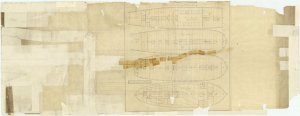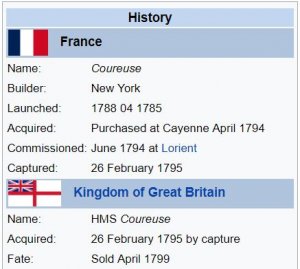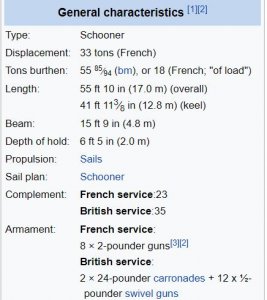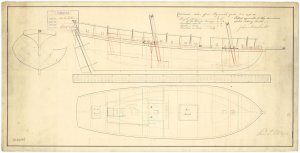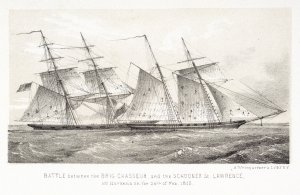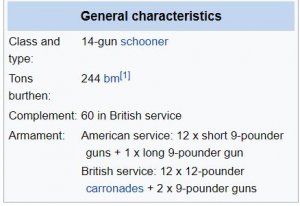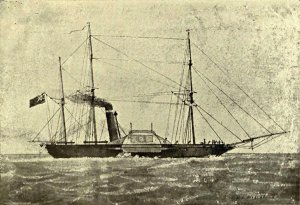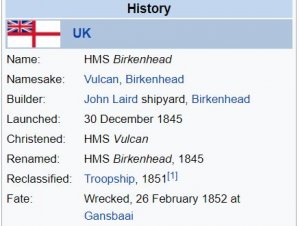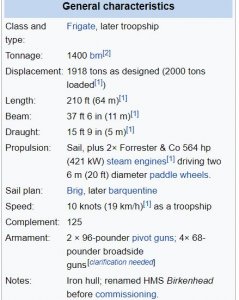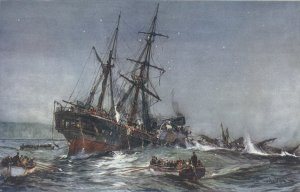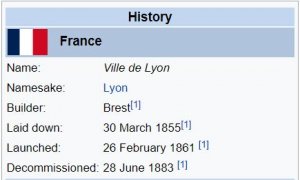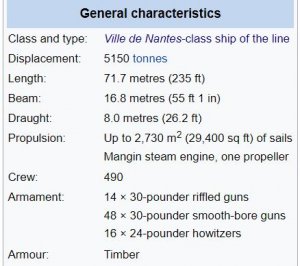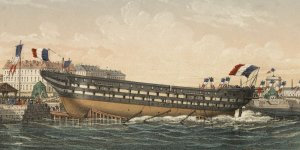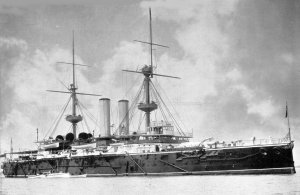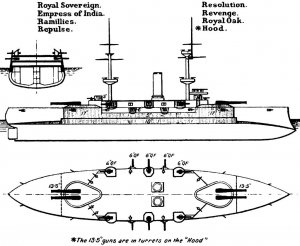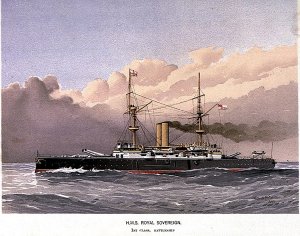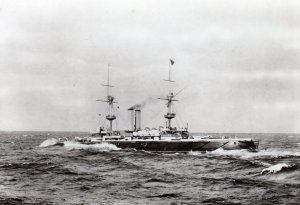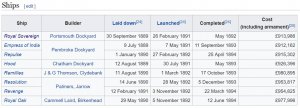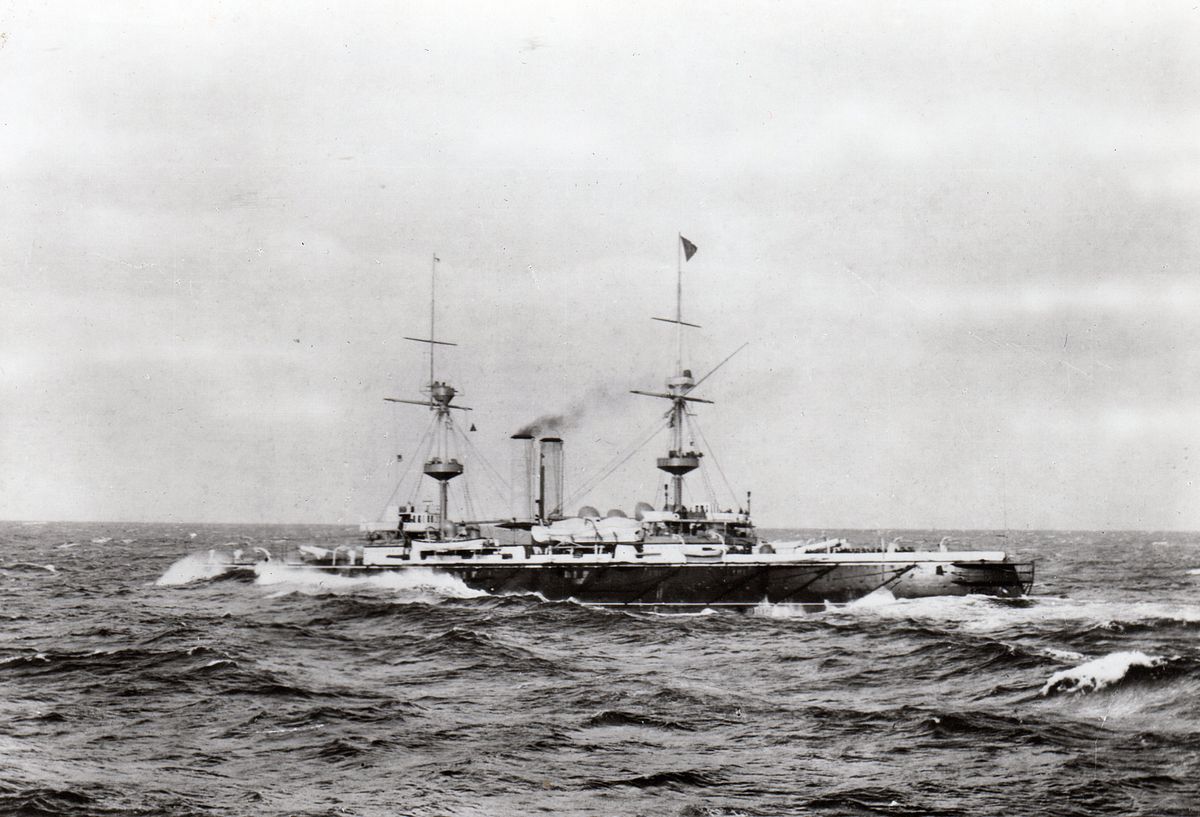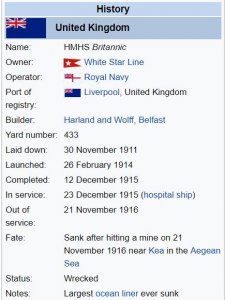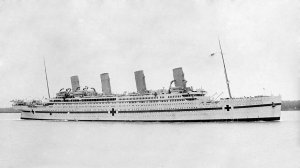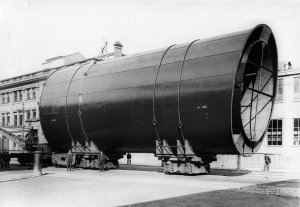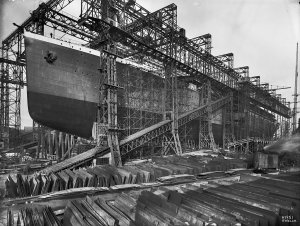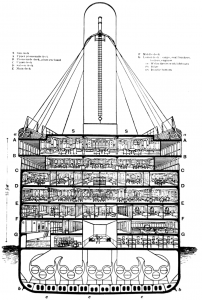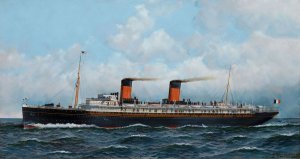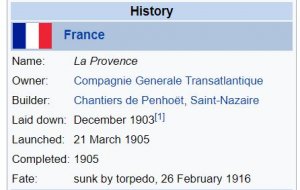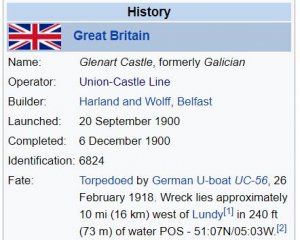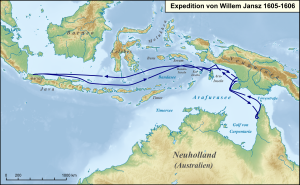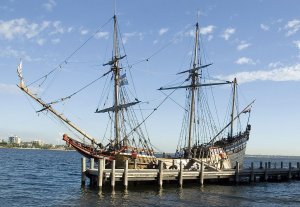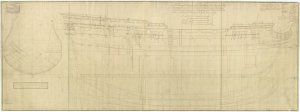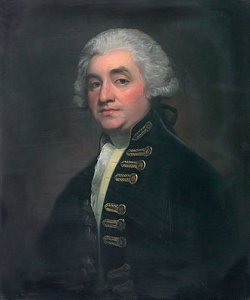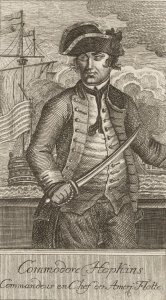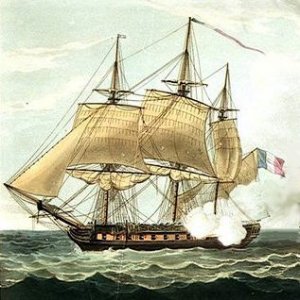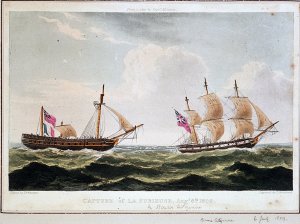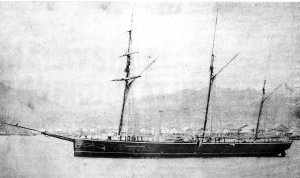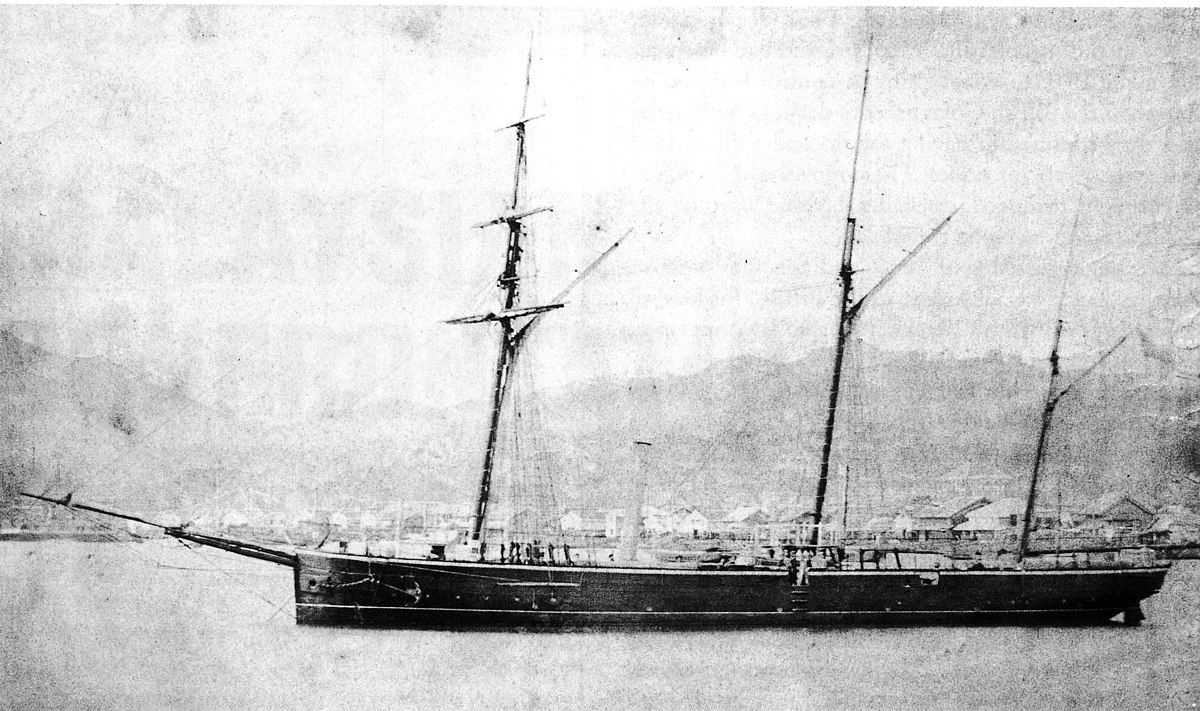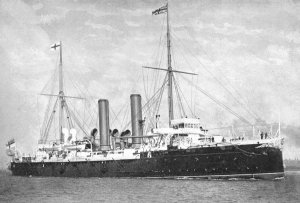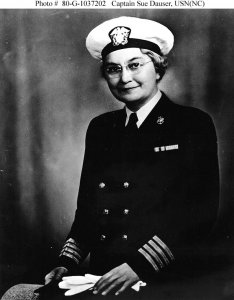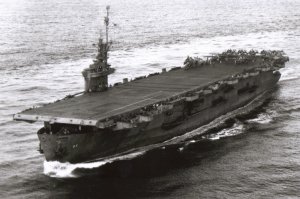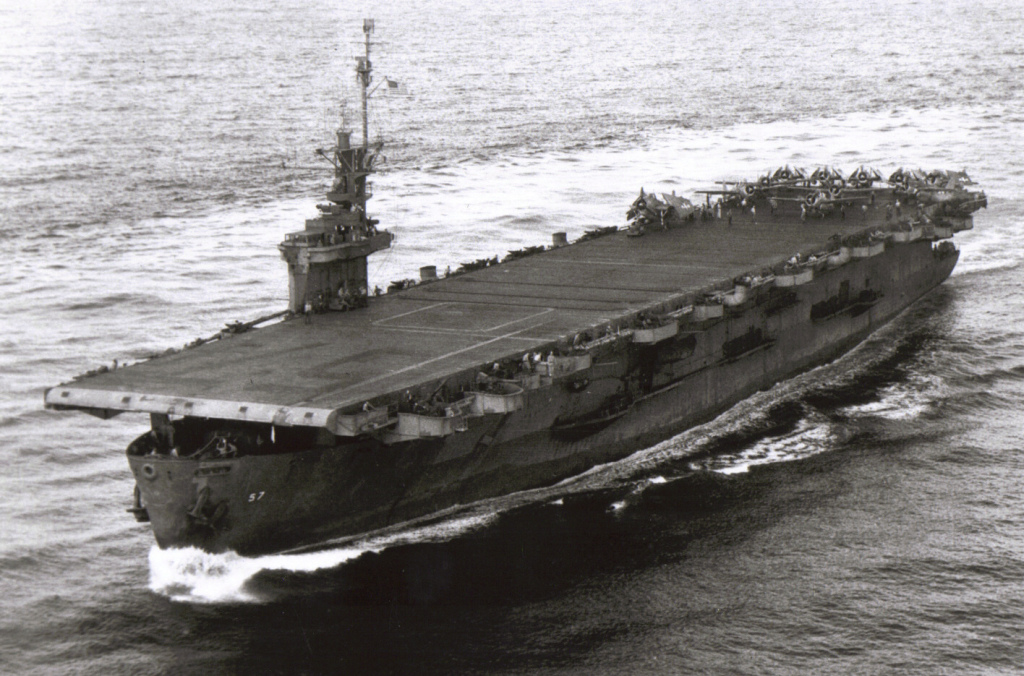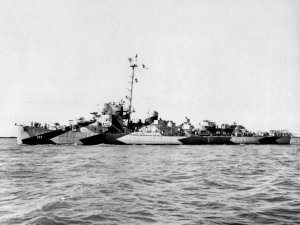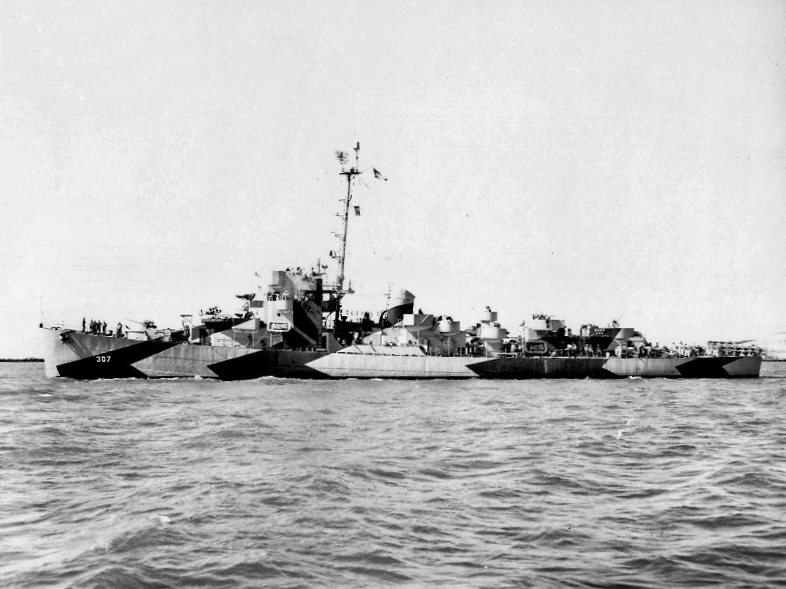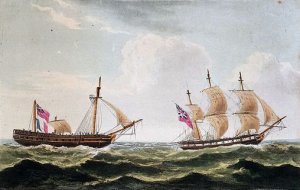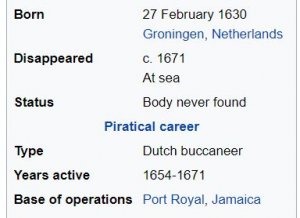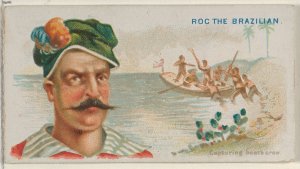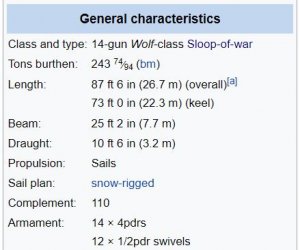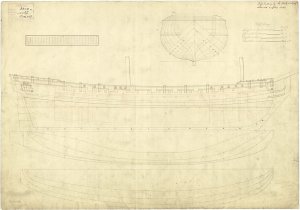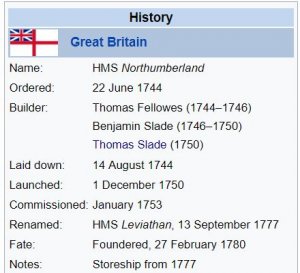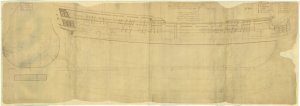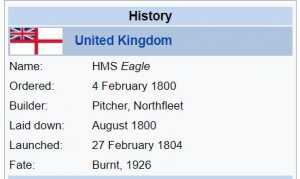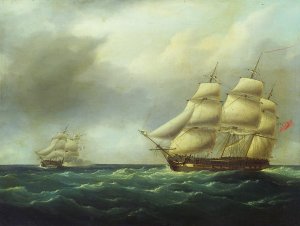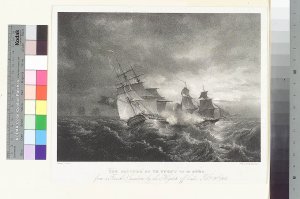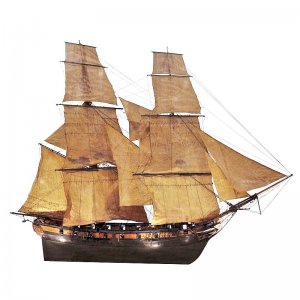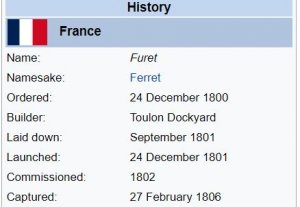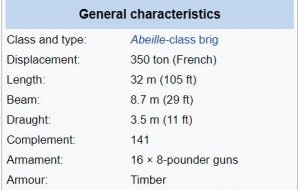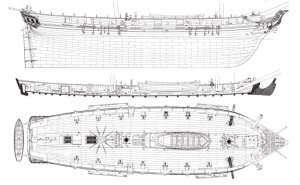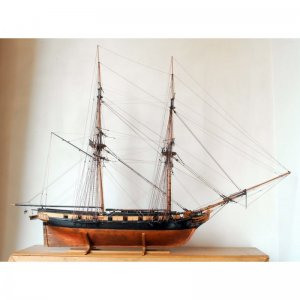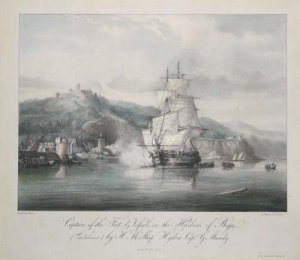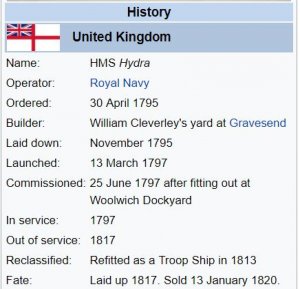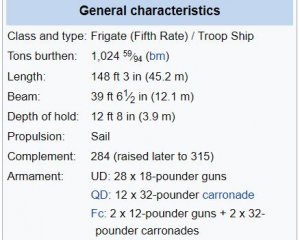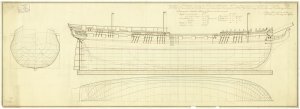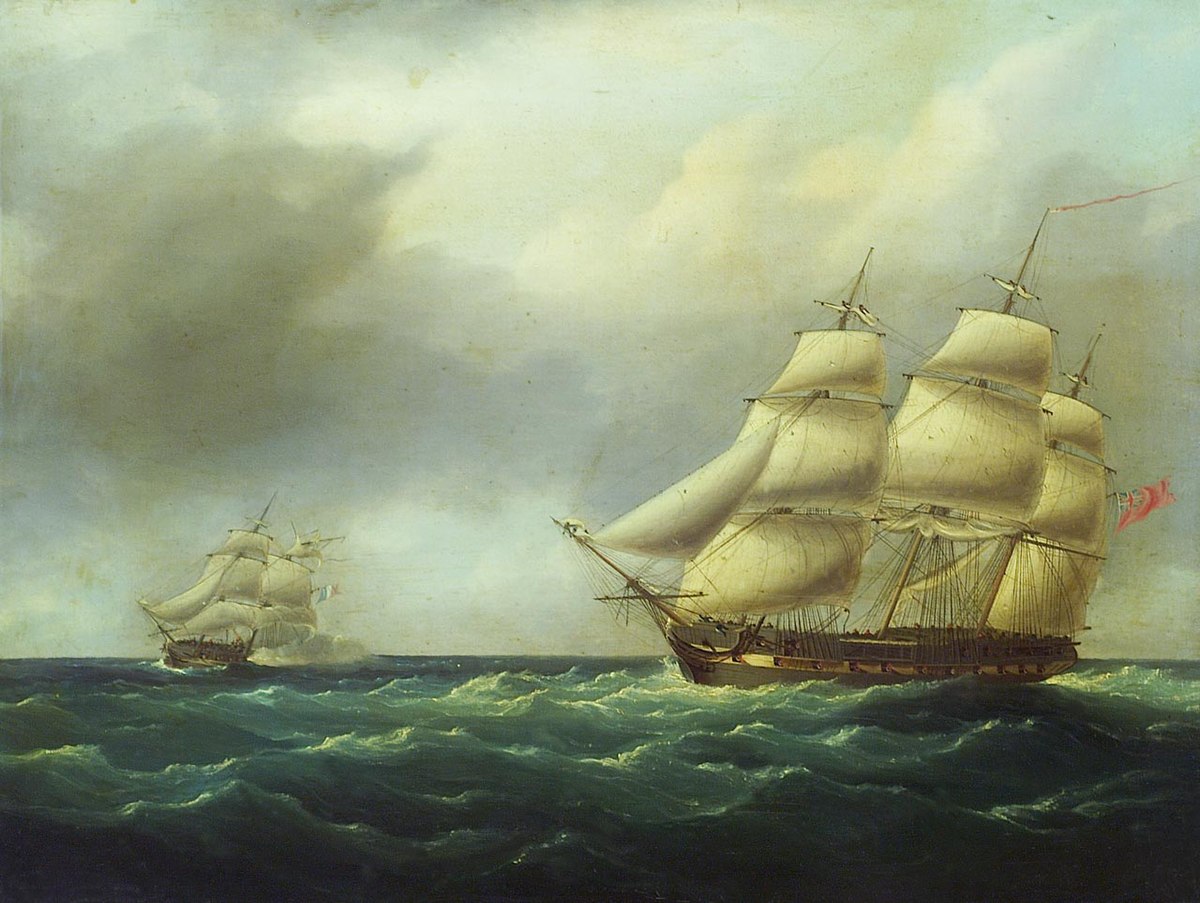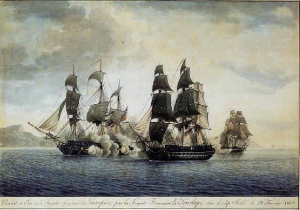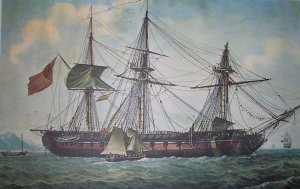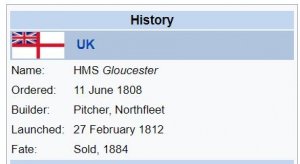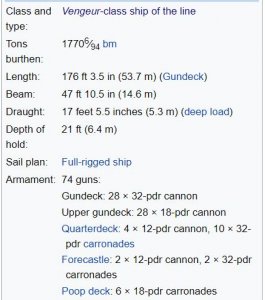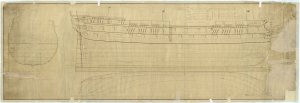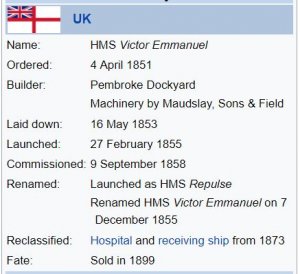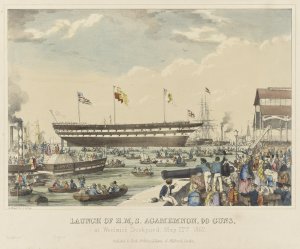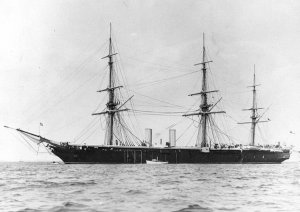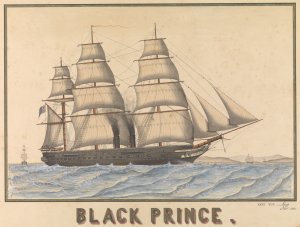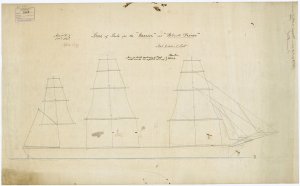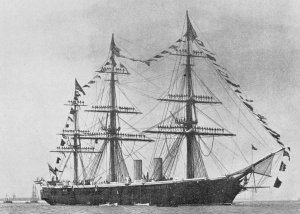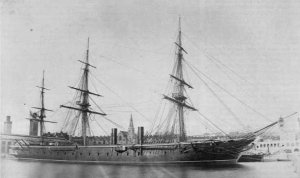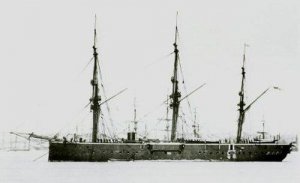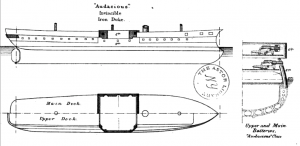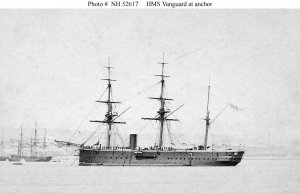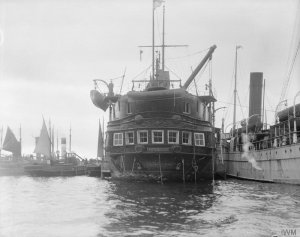Today in Naval History - Naval / Maritime Events in History
26 February 1749 – Launch of Spanish Fénix, an 80-gun ship-of-the-line of the Spanish Navy,
Fénix was an 80-gun ship-of-the-line of the Spanish Navy, launched in 1749. In 1759, she was sent to bring the new king, Carlos III, from Naples to Barcelona. When Spain entered the American Revolutionary War in June 1779, Fénix set sail for the English Channel where she was to join a Franco-Spanish fleet of more than 60 ships-of-the-line under Lieutenant General Luis de Córdova y Córdova. The Armada of 1779 was an invasion force of 40,000 troops with orders to capture the British naval base at Portsmouth.
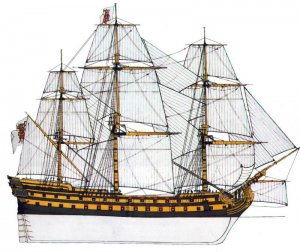
Ship-of-the-line Real Fénix by Rafael Berenguer y Condé, Naval Museum of Madrid
As the flagship of Admiral Juan de Lángara, the ship fought at the Battle of Cape St Vincent on 16 January 1780, where she was captured by the British Royal Navy and commissioned as the third rate HMS Gibraltar in March of that year. She spent a short while in the English Channel before joining Samuel Hood's squadron in the West Indies and taking part in the Capture of St Eustatius in February 1781 and the Battle of Fort Royal the following month. Gibraltar and five other ships were sent to stop a French invasion fleet bound for Tobago in May 1781, but found the French too powerful and had to withdraw. In November, her 18-pound guns were replaced with 24-pounders, after which, in February 1782, she sailed to the East Indies and in the following year participated in the Battle of Cuddalore.
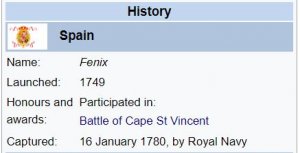
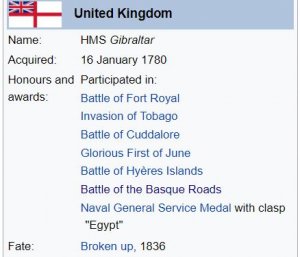
At the start of the French Revolutionary War, Gibraltar served in the Channel Fleet, fighting at the Glorious First of June in 1794 before being sent to the Mediterranean in May 1795. In June, the ship was in an action off Hyères; then, in December 1796, she was badly damaged in a storm and had to return to England for major repairs. By June Gibraltar was back in the Mediterranean, serving in the navy's Egyptian campaign, where she remained during and beyond the Peace of Amiens, except for a short period when she was sent home for a refit.
Returning to the Channel in April 1807, Gibraltar joined the fleet under Admiral James Gambier, which fought the Battle of the Basque Roads in 1809. This was her last major action; the ship was taken out of service in 1813 and converted to a powder hulk. She became a lazarette in 1824, then was broken up in November 1836 at Pembroke Dock.
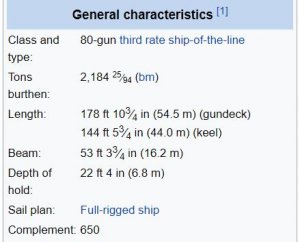
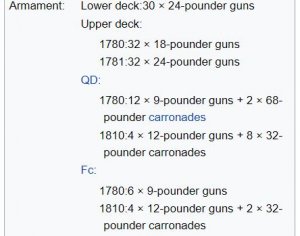
Construction and armament
Fénix was a Spanish, two deck, ship-of-the-line built in Havana from mahogany.[2] Launched in 1749, her dimensions were 178 feet 10.75 inches (54.5 m) along the gun deck, 144 feet 6 inches (44.0 m) at the keel, with a beam of 52 feet 11.75 inches (16.1 m) and a depth in the hold of 22 feet 1.75 inches (6.8 m). This made her 2,184 35⁄94 tons burthen (bm).
Classed as an 80-gun third-rate, Fénix was armed with thirty 24 pounders (11 kg) on her lower gun deck, thirty-two 18 pounders (8.2 kg) on her upper gun deck, twelve 9 pounders (4.1 kg) on the quarterdeck, and six on the forecastle. Her sister ship, Rayo, was later converted to a 100-gun, three-decker. She was wrecked at Trafalgar in 1805.
Fénix was captured by the British in 1780. She was copper sheathed and fitted out for British service at Plymouth Dockyardbetween April and August 1780 at a cost of £16,068.5.3d. The Admiralty changed her armament a number of times: in November 1781 the 18-pounders on her upper deck were upgraded to 24 pounders (11 kg), and the same December two 68 pounders (31 kg) carronades were added. By 1810, the guns on her quarterdeck had been replaced with four 12 pounders (5.4 kg) guns and eight 32 pounders (15 kg) carronades, and on her forecastle with four 12 pounders (5.4 kg) guns and two 32 pounders (15 kg) carronades.[3]Although large, two deck ships were favoured in other European navies, the British preferred to build three-deck third-rates; the extra space making them better suited for flagships. After the capture of Fenix, the Admiralty began to see the advantages of a longer two-deck ship which was less prone to hog, almost as well armed as its three-decked counterparts, and relatively quick.
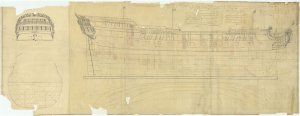
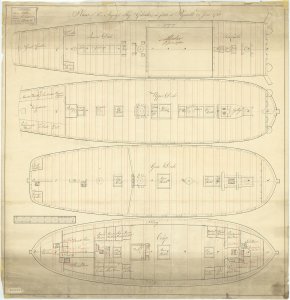
Scale: 1:48. Plan showing the body plan, sternboard with decoration detail, sheer lines with inboard detail and figurehead, and longitudinal half-breadth for Gibraltar (captured 1780), a captured Spanish Third Rate, two-decker. The plan records alterations for fitting her as a British 74-gun Third Rate two-decker. Signed by John Henslow [Master Shipwright, Plymouth Dockyard, 1775-1784]. Reverse: Scale: 1:96. Plan showing the quarterdeck and forecastle, upper deck, gun deck (lower deck), and orlop deck for Gibraltar (captured 1780), a captured Spanish Third Rate, two-decker. The plan illustrates the ship as she was fitted as a British 74-gun Third Rate, two-decker.
Rayo class, both ordered 1 July 1847 at Havana
Fénix (San Alejandro) 80 (launched 26 February 1749) - Captured by Britain at the Battle of Cape Santa Maria, 16 January 1780, renamed HMS Gibraltar, BU 1836
Rayo (San Pedro Apostol) 80 (launched 28 June 1749) - Converted to a 100-gun First Rate ship in 1804; foundered after the Battle of Trafalgar, 23 October 1805
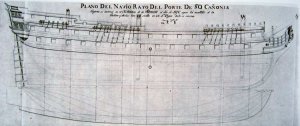
Dirección completa de la ubicación en la Real Biblioteca: http://realbiblioteca.patrimonionac.../frameset&FF=Xnavio&SORT=D&searchscope=5&2,2,
Date1804Sourcehttp://realbiblioteca.patrimonionacional.esAuthorHonorato Bouyon
https://en.wikipedia.org/wiki/Spanish_ship_Fenix_(1749)

 en.wikipedia.org
en.wikipedia.org
26 February 1749 – Launch of Spanish Fénix, an 80-gun ship-of-the-line of the Spanish Navy,
Fénix was an 80-gun ship-of-the-line of the Spanish Navy, launched in 1749. In 1759, she was sent to bring the new king, Carlos III, from Naples to Barcelona. When Spain entered the American Revolutionary War in June 1779, Fénix set sail for the English Channel where she was to join a Franco-Spanish fleet of more than 60 ships-of-the-line under Lieutenant General Luis de Córdova y Córdova. The Armada of 1779 was an invasion force of 40,000 troops with orders to capture the British naval base at Portsmouth.

Ship-of-the-line Real Fénix by Rafael Berenguer y Condé, Naval Museum of Madrid
As the flagship of Admiral Juan de Lángara, the ship fought at the Battle of Cape St Vincent on 16 January 1780, where she was captured by the British Royal Navy and commissioned as the third rate HMS Gibraltar in March of that year. She spent a short while in the English Channel before joining Samuel Hood's squadron in the West Indies and taking part in the Capture of St Eustatius in February 1781 and the Battle of Fort Royal the following month. Gibraltar and five other ships were sent to stop a French invasion fleet bound for Tobago in May 1781, but found the French too powerful and had to withdraw. In November, her 18-pound guns were replaced with 24-pounders, after which, in February 1782, she sailed to the East Indies and in the following year participated in the Battle of Cuddalore.


At the start of the French Revolutionary War, Gibraltar served in the Channel Fleet, fighting at the Glorious First of June in 1794 before being sent to the Mediterranean in May 1795. In June, the ship was in an action off Hyères; then, in December 1796, she was badly damaged in a storm and had to return to England for major repairs. By June Gibraltar was back in the Mediterranean, serving in the navy's Egyptian campaign, where she remained during and beyond the Peace of Amiens, except for a short period when she was sent home for a refit.
Returning to the Channel in April 1807, Gibraltar joined the fleet under Admiral James Gambier, which fought the Battle of the Basque Roads in 1809. This was her last major action; the ship was taken out of service in 1813 and converted to a powder hulk. She became a lazarette in 1824, then was broken up in November 1836 at Pembroke Dock.


Construction and armament
Fénix was a Spanish, two deck, ship-of-the-line built in Havana from mahogany.[2] Launched in 1749, her dimensions were 178 feet 10.75 inches (54.5 m) along the gun deck, 144 feet 6 inches (44.0 m) at the keel, with a beam of 52 feet 11.75 inches (16.1 m) and a depth in the hold of 22 feet 1.75 inches (6.8 m). This made her 2,184 35⁄94 tons burthen (bm).
Classed as an 80-gun third-rate, Fénix was armed with thirty 24 pounders (11 kg) on her lower gun deck, thirty-two 18 pounders (8.2 kg) on her upper gun deck, twelve 9 pounders (4.1 kg) on the quarterdeck, and six on the forecastle. Her sister ship, Rayo, was later converted to a 100-gun, three-decker. She was wrecked at Trafalgar in 1805.
Fénix was captured by the British in 1780. She was copper sheathed and fitted out for British service at Plymouth Dockyardbetween April and August 1780 at a cost of £16,068.5.3d. The Admiralty changed her armament a number of times: in November 1781 the 18-pounders on her upper deck were upgraded to 24 pounders (11 kg), and the same December two 68 pounders (31 kg) carronades were added. By 1810, the guns on her quarterdeck had been replaced with four 12 pounders (5.4 kg) guns and eight 32 pounders (15 kg) carronades, and on her forecastle with four 12 pounders (5.4 kg) guns and two 32 pounders (15 kg) carronades.[3]Although large, two deck ships were favoured in other European navies, the British preferred to build three-deck third-rates; the extra space making them better suited for flagships. After the capture of Fenix, the Admiralty began to see the advantages of a longer two-deck ship which was less prone to hog, almost as well armed as its three-decked counterparts, and relatively quick.


Scale: 1:48. Plan showing the body plan, sternboard with decoration detail, sheer lines with inboard detail and figurehead, and longitudinal half-breadth for Gibraltar (captured 1780), a captured Spanish Third Rate, two-decker. The plan records alterations for fitting her as a British 74-gun Third Rate two-decker. Signed by John Henslow [Master Shipwright, Plymouth Dockyard, 1775-1784]. Reverse: Scale: 1:96. Plan showing the quarterdeck and forecastle, upper deck, gun deck (lower deck), and orlop deck for Gibraltar (captured 1780), a captured Spanish Third Rate, two-decker. The plan illustrates the ship as she was fitted as a British 74-gun Third Rate, two-decker.
Rayo class, both ordered 1 July 1847 at Havana
Fénix (San Alejandro) 80 (launched 26 February 1749) - Captured by Britain at the Battle of Cape Santa Maria, 16 January 1780, renamed HMS Gibraltar, BU 1836
Rayo (San Pedro Apostol) 80 (launched 28 June 1749) - Converted to a 100-gun First Rate ship in 1804; foundered after the Battle of Trafalgar, 23 October 1805

Dirección completa de la ubicación en la Real Biblioteca: http://realbiblioteca.patrimonionac.../frameset&FF=Xnavio&SORT=D&searchscope=5&2,2,
Date1804Sourcehttp://realbiblioteca.patrimonionacional.esAuthorHonorato Bouyon
https://en.wikipedia.org/wiki/Spanish_ship_Fenix_(1749)




